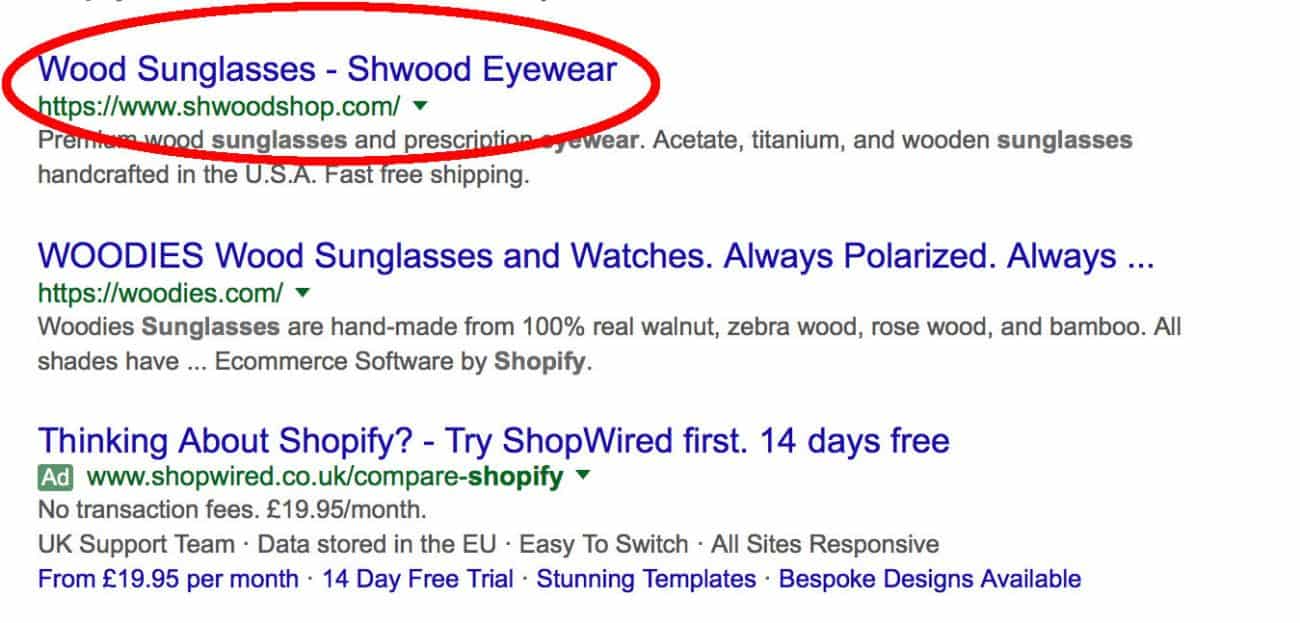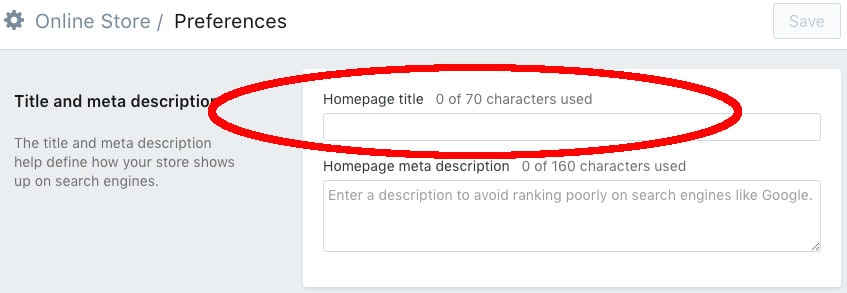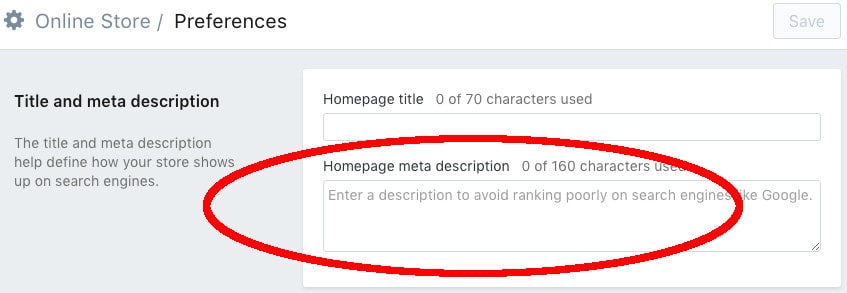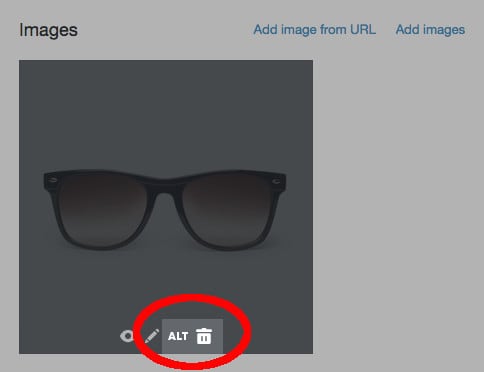Your Shopify store is set up, it looks great, and the first orders are coming in. Perfect!
The next big step is generating some serious traffic through Google.
Just imagine. If your online store was on Google’s first page of results, you could generate sales without having to spend a penny on advertising.

Of course, rising up the Google ranks isn’t easy. But it is possible with some clever ‘search engine optimization’ or SEO.
Catch-up On Our Complete Shopify Guide
In part 3 of this Shopify guide, we’re looking at the essentials of SEO for Shopify. Let’s jump straight in.
Keywords are the heart of SEO. Keywords tell Google exactly who you are and what you do.
To come up with the best keywords, put yourself in your customer’s shoes. What would you search for to find your products? Maybe it’s ‘punk t-shirts’ or ‘prom dresses’ or ‘adventure cameras’.

There’s a sweet spot when it comes to choosing keywords. It’s hard to rank for broad keywords, like ‘shoes’ because the biggest retailers dominate. On the other hand, a niche key phrase like ‘purple velcro punk shoes’ won’t pick up enough searches. Try something in the middle, like ‘punk shoes’.
There’s a science to choosing the right words and phrases. We recently wrote a detailed post about keyword selection which is a good starting point.
Here’s the biggest difference between normal SEO and SEO for Shopify:
You want searchers that will actually buy something.
Let’s say you sell handmade jewelry on Shopify. People searching for ‘handmade jewelry’ might be looking for information on making jewelry. You’re not interested in those people.
You want a customer who wants to buy handmade jewellery. Try modifying your keywords or phrases to include active words like ‘buy’, ‘best’ ‘cheap’.
Look for a keyword or phrase that suggest an intention to buy. Check out this comprehensive guide in finding the profitable keywords by Pardeep Goyal.
Got your perfect keywords? Great. Time to place them where Google will find them.
Shopify has five crucial places to put your keywords:
1. Your Page Title
This is the title that will appear on Google’s results page.

Notice how this store places the keyphrase ‘wood sunglasses’ before the store name? That’s because more people search for ‘wood sunglasses’. Think about describing your store in the title.

Head to Online Store > Preferences to change yours.
Pro tip: try to make your title a call-to-action. Think of it as an enticing headline that begs to be clicked. See how House of Fraser use an active CTA: “Buy your watch online”

2. Meta Description
The meta description is the short piece of wording that shows up underneath the title. Again, place your keywords here BUT try to make it descriptive and intriguing. This is your chance to convince customers to click.
Make sure every page has a different meta description too. Again, head to Online Store > Preferences.

3. Image Description & Alt Tags
Google is pretty smart, but it still can’t see a picture of, say, a red sock. You have to tell Google it’s a red sock. To do this, change the name of the picture file to ‘red sock [shopname]’ before uploading.
You can also add ‘alt-text’, i.e. the text that’s shown if a web browser can’t load the image. Make it descriptive and include your keywords. Now, Google can find it, read it, and rank it.

Want more? Read Shopify’s guide to optimizing your product images.
4. Headers and Titles (H1 tags)
Your headers are one of the first places Google looks to see what your site’s about. Make sure your product pages all have descriptive headers and don’t forget to include your keywords.
5. Product Descriptions and Copy
Always include your keywords in the product description to help Google find your page. It’s also essential that you write unique and exciting product descriptions.
Don’t just copy the manufacturer’s description because – chances are – that copy is pasted all over the internet and Google hates duplicate copy. Plus, your descriptions are a great chance to show your own tone of voice and convince customers to make a purchase.
Alongside keywords, links are an essential ranking factor for SEO. Start by using internal links throughout your site. Link to your product pages from the home page. Set up category links and link to products from your blog.
The more connected your website, the more Google understands about your store and its products. Think of it like building a foundation or backbone for your site.
In order to rank your store, Google looks at which other websites are linking to you. Google uses an algorithm based on number of links and the authority of the site linking to you to determine your rating.
For example, if The Huffington Post and The New York Times link to your products, Google knows you must have some real authority, so you’ll rank higher.
There are countless ways to generate links back to your Shopify store. Sending out a press release will help get coverage on blogs, complete with a link back to your site. Offering to write guest posts for blogs in your niche will earn you a link too. You can also simply email websites and ask them to review or link to your products.
Pro tip: NEVER buy links, use a link farm or link exchange. Google hunts down websites using these techniques. You’re looking for natural link behavior.
Google loves unique content, regular updates and evidence of high user activity and satisfaction. Customer reviews tick each of these boxes and help generate more sales. Win-win.
Any online store will eventually run out of stock or discontinue an item. If you delete that item, any links to that product will now lead customers to an error page. Google hates error pages and it will increase your bounce rate (another factor Google looks at).
Instead, set up redirects from old product pages to new ones. Simple.
Content and blogging is super useful for SEO. It’s a chance to squeeze in more keywords and generate lots of backlinks and traffic to your Shopify store. It also has the effect of keeping people on your site for longer (great for SEO) and pointing customers to your products.
Shopify has a built-in blog feature, but it is hugely under-used. Start a content strategy and try blogging once a week. Not sure what to blog about? Get inspired!
One of the best kept secrets at Shopify is that they automatically generate a sitemap.xml file. This indexes your content, products and pages so that Google can find them easily. It’s often a pain to set up, but Shopify’s got you covered. Once you have the sitemap URL, submit it to Google Search Console and you will be presented with more useful information about your site.
If you do not know where your sitemap is, access it at: your-url.com/sitemap.xml. Otherwise, read this Shopify sitemap guide.
—
Shopify has a pretty strong SEO foundation, but with a few tweaks and tricks you can rise up the Google ranks.
Have you tried improving the SEO for your Shopify store? Let me know in the comment section.
And stick around for the final part of this Shopify series when we’ll look at promoting and marketing your Shopify store for ultimate sales.
Ben is a copywriter and editor from London. His work regularly appears in The Huffington Post, and he has worked on several successful copywriting campaigns for Sony UK. Feel free to connect with Ben via Twitter.